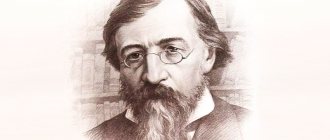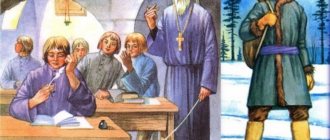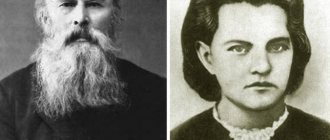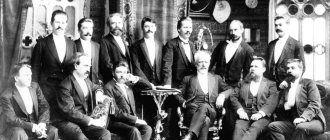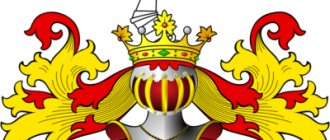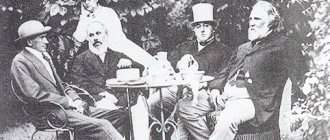- Reports
- People
- Gogol life and work
Gogol, one of the pillars of Russian literature, a magnificent playwright and master of prose, was born in the small village of Sorochintsy in 1809. The writer was born into a religious family of Little Russians, that is, Ukrainians. He came from an old Cossack family.
From early childhood he was sick quite a lot, and the main illness was mental illnesses, although he was quite able to cope with this and be a functioning part of society. Born Nikolai Vasilyevich received a sad prognosis from doctors. They thought the fragile boy would not live much time, but the writer denied this forecast.
The writer's training began at Poltava courses, after which he went to a gymnasium in the city of Nizhyn. In fact, the Nizhyn gymnasium was the Little Russian analogue of the Tsarskoye Selo Lyceum. Therefore, Gogol received an excellent comprehensive education, which he graduated in 1828.
After that, he chooses to work in the field of law, but upon arrival in St. Petersburg he cannot get work, he tries to make money through literature, but receives negative reviews from critics. Gogol leaves for Germany and a year later returns to the Northern capital, where he gets a job as a scribe in the department of state economy. He also manages to begin more or less normal literary activity.
After 1830, he met Pushkin, Zhukovsky and other famous writers of that time. “Evenings on the farm...” brought him popularity. Around this period, he also created his other famous books such as “Viy”, “The Inspector General” and others.
In 1835, he began working on the poem “Dead Souls,” which he mostly wrote in Italy. It is longing for his homeland and the feeling of an inextricable connection with his own country that allows him to create such a great work, which he completed in 1841. By the way, Gogol wrote all of his works while standing, working at the so-called desk due to illness.
Report on the topic Gogol
Each of us read the famous “Sorochinskaya Fair” and watched the legendary film “Viy”. All these works of art were created by the greatest classic of Russian literature, Nikolai Vasilyevich Gogol. From the memoirs of critics, you should know that the aspiring writer with his works attracted not only friends and acquaintances, but also employees of the printing house. They found “Evenings on a Farm near Dikanka” especially poetic and fascinating, where the author tells us about the beauties of nature and the life of the Ukrainian people.
This is explained, of course, by the fact that Gogol himself was from the Poltava region. The family was large. And although they did not particularly need money, it was still difficult with finances. Guests often came to their house. And the writer’s father always took special pleasure in talking with Vasily Vasilyevich Kapnist on various literary topics. From his grandmother, Tatyana Semyonovna, little Nikosha learned a lot about the glorious deeds of the Cossacks of the Zaporozhye Sich.
In 1821 he entered the 2nd grade of the Nizhyn gymnasium. Here he truly learned to read books and fell in love with the performing arts. Nikolai Vasilyevich observed the lives and morals of people, and wrote down all the most interesting things in a notebook. All observations could be seen in his future stories. After completing his studies at this institution, Gogol decided to do something significant in this life. And so in 1828 he arrived in St. Petersburg to fulfill his dreams of serving the people. Gogol became an ordinary official, but the work did not give him any satisfaction, and then he decided to try writing.
The very first work was “Basavryuk”, which later became known as “Evenings on a farm near Dikanka”. It was this work with the special skill of the writer that showed us the moments where real stories are intertwined with the fairy-tale world. The story was valuable because Gogol depicted the spiritual strength and simplicity of the people. After the publication of this work, Nikolai Vasilyevich was put on a par with Pushkin and Zhukovsky.
After the publication of the collections “Arabesques” and “Mirgorod” in 1835, Gogol devoted himself to literary creativity. Having been interested in theater since childhood, Nikolai Vasilyevich took up drama. In 1835, he created the comedy “The Inspector General,” which was an open challenge to the officials of Tsarist Russia. Due to the fact that the public did not understand the essence of the work, and it was criticized, Gogol left for Italy, where he continued to work on his next work, “Dead Souls.” Returning to his homeland, he published the first volume, but he never completed the second volume due to a creative crisis. The brilliant writer, just before his death, destroyed the 2nd “Dead Souls” and died on February 21, 1852. And although such a wonderful writer is not with us, his books live and will live.
Gogol's works
The creative path of the Russian writer Nikolai Vasilyevich Gogol is a great asset that has become an eternal gift to the Russian people for many generations to come.
Despite the fact that Nikolai Vasilyevich lived a relatively short life, only forty-three years, and in the last decade he was unable to complete a single work, the great writer made a contribution of enormous magnitude to Russian literature.
Gogol was perceived in different ways and as an inventor, a caricaturist, an idealistic dreamer and simply an eccentric storyteller. Such diversity attracted its audience even during Nikolai Vasilyevich’s lifetime. All sorts of absurd rumors were spread about him, but the writer did not try to deny them, realizing that after some time this would turn into a kind of legend.
The creative side of life was a complete success for the writer. All of his works were published during his lifetime, and each new literary work intrigued critics with renewed vigor. The fact that a mature genius had entered literature became clear after the publication of the story “Evenings on a Farm near Dikanka,” in which the writer managed to ironically present ugly images of evil spirits. And even before the story, the poem “Hanz Küchelgarten” was written, which immediately began to receive negative reviews. A young, sensitive writer buys books with a poem and burns them. Thus, a kind of ring element appears in creativity, which was begun and completed by burning one’s own work.
It is impossible to ignore the comedy “The Inspector General”; at the first stage production, Nicholas I was personally present, who perceived this comedy as a desecration of bureaucracy. Gogol himself did not imagine this comedy this way, and after its release he began to take a tougher approach to his further work. Known far beyond Russia, the poem “Dead Souls” is replete with all sorts of vices of humanity that Gogol called for to be eradicated - hypocrisy, lies, rudeness, greed.
Even at the beginning of his creative career, the author had an irresistible desire to expose evil, and he looked for possible ways to do this. The means for struggle were chosen, they turned out to be satire and humor. The writer was sure that even those who are not afraid of absolutely anything are afraid of laughter. Gogol approached this masterfully. The laughter that was expressed outwardly actually concealed deep inside the desire to sob from hopelessness. The story “Notes of a Madman” presents tragedy in a comedic guise.
At the beginning of his journey, the author was not yet quite ready for the deep calls of reason and his early work, if it was cheerful, then this cheerfulness was genuine. And with each new stage of growing up, he longed for deeper thoughtfulness. Calling on your audience to do the same.
Gogol managed to raise the importance of literary creativity to a new level. Associated with the name of this writer, the sad and at the same time instructive episode of sacrificing one’s creations will forever remain in the reader’s memory.
Gogol Nikolay Vasilievich - abstract
Years of life: 04/01/1809 - 03/04/1852Gogol N.V. Portrait by F.A. Moller
Born in the town of Velikiye Sorochintsy, Mirgorod district, Poltava province, in the family of a landowner. The Gogols had over 1000 acres of land and about 400 serfs. The writer's father, V. A. Gogol-Yanovsky (1777-1825), served at the Little Russian Post Office, in 1805 he retired with the rank of collegiate assessor and married M. I. Kosyarovskaya (1791-1868), according to legend, the first beauty in the Poltava region. There were six children in the family: in addition to Nicholas, son Ivan (died in 1819), daughters Marya (1811-1844), Anna (1821-1893), Lisa (1823-1864) and Olga (1825-1907).
Gogol spent his childhood years on his parents' estate Vasilievka (another name is Yanovshchina). The cultural center of the region was Kibintsy, the estate of D. P. Troshchinsky (1754-1829), a distant relative of the Gogols, a former minister elected to the district marshals (district leaders of the nobility); Gogol's father acted as his secretary. In Kibintsy there was a large library, there was a home theater, for which Father Gogol wrote comedies, being also its actor and conductor.
As a child, Gogol wrote poetry. The mother showed great concern for the religious education of her son, who, however, was influenced not so much by the ritual side of Christianity as by its prophecy of the Last Judgment and the idea of \u200b\u200bretribution after death.
In 1818-19, Gogol, together with his brother Ivan, studied at the Poltava district school, and then, in 1820-1821, took lessons from the Poltava teacher Gabriel Sorochinsky, living in his apartment. In May 1821 he entered the gymnasium of higher sciences in Nizhyn. Here he is engaged in painting, participates in performances - as a set designer and as an actor, and with particular success he plays comic roles. He also tries himself in various literary genres (writes elegiac poems, tragedies, historical poems, stories). At the same time he writes the satire “Something about Nezhin, or the law is not written for fools” (not preserved). However, the thought of writing has not yet “come to mind” for Gogol; all his aspirations are connected with “public service”; he dreams of a legal career. Gogol’s decision to make this was greatly influenced by Prof. N. G. Belousov, who taught a course in natural law, as well as a general strengthening of freedom-loving sentiments in the gymnasium. In 1827, the “case of freethinking” arose here, which ended with the dismissal of leading professors, including Belousov; Gogol, who sympathized with him, testified in his favor during the investigation.
Having graduated from the gymnasium in 1828, Gogol, together with another graduate A. S. Danilevsky (1809-1888), went to St. Petersburg in December. Experiencing financial difficulties, unsuccessfully fussing about a place, Gogol made his first literary attempts: at the beginning of 1829 the poem “Italy” appeared, and in the spring of the same year, under the pseudonym “V. Alov” Gogol prints “an idyll in paintings” “Hanz Küchelgarten”. The poem evoked harsh and mocking reviews from N. A. Polevoy and later a condescending and sympathetic review from O. M. Somov (1830), which intensified Gogol’s difficult mood. In July 1829, he burns unsold copies of the book and suddenly leaves abroad, to Germany, and by the end of September, almost as suddenly, returns to St. Petersburg. Gogol explained his step as an escape from a love feeling that unexpectedly took possession of him. Before leaving abroad or shortly after his return, Gogol experiences another setback - his attempt to enter the stage as a dramatic actor is unsuccessful.
At the end of 1829, he managed to decide to serve in the department of state economy and public buildings of the Ministry of Internal Affairs. From April 1830 to March 1831 he served in the department of appanages (first as a scribe, then as an assistant to the clerk), under the command of the famous idyllic poet V.I. Panaev. His stay in the offices caused Gogol deep disappointment in the “state service,” but it provided him with rich material for future works that depicted bureaucratic life and the functioning of the state machine. By this time, Gogol was devoting more and more time to literary work. Following the first story “Bisavryuk, or the Evening on the Eve of Ivan Kupala” (1830), Gogol published a number of works of art and articles: “Chapter from a Historical Novel” (1831), “Teacher. From a Little Russian story: “The Scary Boar” (1831), “Woman” (1831). The story “Woman” was the first work signed by the author’s real name. Gogol meets Zhukovsky, P. A. Pletnev, Pushkin. By the summer of 1831, his relationship with Pushkin’s circle became quite close: living in Pavlovsk, Gogol often visited Pushkin and Zhukovsky in Tsarskoye Selo; carries out assignments for the publication of Belkin's Tales. Gogol’s financial situation is strengthened thanks to his pedagogical work: he gives private lessons in the houses of P.I. Balabin, N.M. Longinov, A.V. Vasilchikov, and from March 1831, at the request of Pletnev, he became a history teacher at the Patriotic Institute (where he later assigned his sisters, Anna and Lisa).
During this period, Evenings on a Farm near Dikanka (1831-1832) was published. They aroused almost universal admiration.
After the release of the 2nd part of “Evenings”, Gogol came to Moscow in June 1832 as a famous writer. He meets M.P. Pogodin, S.T. Aksakov and his family, M.N. Zagoskin, I.I. Dmitriev. On this visit or on the second one (on the way back through Moscow from Vasilyevka), he also meets I.V. and P.V. Kireevsky, M.S. Shchepkin, and becomes close to M.A. Maksimovich. The next year, 1833, for Gogol was one of the most intense, full of torment, searching for a further path. Gogol writes his first comedy, “Vladimir of the 3rd Degree,” however, experiencing creative difficulties and foreseeing censorship complications, he stops working. Gogol considers the study of history - Ukrainian and world - to be very important, perhaps the main direction of his activity.
Numerous preliminary developments remained (in particular, “Plan for teaching general history”, “Excerpt from the history of Little Russia ...”, both - 1834; later, under changed names, they were included in “Arabesques”) of the writer. Gogol is trying to occupy the department of world history at the newly opened Kiev University, but to no avail. In June 1834, however, he was appointed associate professor in the department of general history at St. Petersburg University. Simultaneously with his pedagogical work and works on history, about which Gogol quite widely informs his friends, he in deep secret wrote the stories that made up his two subsequent collections - “Mirgorod” and “Arabesques”. Their harbinger was “The Tale of How Ivan Ivanovich Quarreled with Ivan Nikiforovich” (first published in the book “Housewarming” in 1834).
The publication of “Arabesques” (1835) and “Mirgorod” (1835) marked Gogol’s step towards realism, consolidating and deepening the trend that had emerged in “Evenings”. The desire for the “ordinary” meant a change in the subject of the image: instead of strong and sharp characters - the vulgarity and facelessness of ordinary people, instead of poetic and deep feelings - sluggish, almost reflexive movements. In the stories from St. Petersburg life, “ordinary” life itself became illusory. Manifestations of ghostliness are an endless series of unmotivated, illogical or internally inconsistent movements, facts and phenomena, from the actions of characters to the isolation and autonomy of toilet details, external surroundings, as well as organs and parts of the human face and body. The pinnacle of Gogol’s fiction is the “St. Petersburg story” “The Nose” (1835; published in 1836), an extremely bold grotesque that anticipated some trends in twentieth-century art. In contrast to both the provincial and metropolitan world was the story “Taras Bulba”, which captured that moment in the national past when the people (“Cossacks”), defending their sovereignty, acted integrally, together and, moreover, as a force that determined the nature of pan-European history.
The writer spends the summer of 1835 in Vasilyevka, Crimea, and also in Kyiv, where he stays with Maksimovich and, together with Danilevsky, studies architectural monuments. In September he returns to St. Petersburg and leaves teaching (in June he resigns from the Patriotic Institute, in December - from the university).
In the fall of 1835, he began writing “The Inspector General,” the plot of which was suggested by Pushkin; the work progressed so successfully that on January 18, 1836, he read the comedy at an evening with Zhukovsky (in the presence of Pushkin, P. A. Vyazemsky and others), and in February-March he was already busy staging it on the stage of the Alexandria Theater. The play premiered on April 19. May 25 - premiere in Moscow, at the Maly Theater.
The depth of the comedy was not reflected in its first productions, which gave it a touch of vaudeville and farce; The image of Khlestakov was especially depleted by N. O. Durom in St. Petersburg and D. T. Lensky in Moscow who played this role. Much greater understanding was found by critics who noted the originality of the comedy and called the author “the great comedian of real life.” However, the first to be heard were sharply unkind reviews from F.V. Bulgarin, who accused the writer of slandering Russia, and O.I. Senkovsky, who believed that the comedy was devoid of a serious idea and was not formalized in plot and composition. On Gogol, who had time to read only these reviews before going abroad, they had a depressing effect, reinforced by many more oral judgments.
The writer's state of mind was aggravated by the complications of his relationship with Pushkin; the reasons for this are not yet clear enough, but one of them was friction during the editing of Sovremennik, for which Pushkin invited Gogol to collaborate. In 1836, the story “The Stroller,” the dramatic scene “The Morning of a Business Man,” and several reviews and articles were published. Some expressions of the latter seemed risky and incorrect to Pushkin; in the editorial note he made it clear that the article was not a Sovremennik program.
In June 1836, Gogol left St. Petersburg for Germany (in total, he lived abroad for about 12 years). He spends the end of summer and autumn in Switzerland, where he begins to work on the continuation of Dead Souls. The plot was also suggested by Pushkin. The work began back in 1835, before the writing of The Inspector General, and immediately acquired a wide scope. In St. Petersburg, several chapters were read to Pushkin, causing him both approval and at the same time a depressing feeling.
In November 1836, Gogol moved to Paris, where he met A. Mickiewicz. Here in February 1837, in the midst of work on “Dead Souls,” he received the shocking news of Pushkin’s death. In a fit of “inexpressible melancholy” and bitterness, Gogol feels the “present work” as the poet’s “sacred testament.” At the beginning of March 1837, he came to Rome for the first time, where he spent time in the company of the artist A. A. Ivanov, I. S. Shapovalov, as well as Princess Z. A. Volkonskaya. At the end of summer, Gogol was on the road again: Turin, Baden-Baden, Frankfurt, Geneva. In October he came to Rome for the second time, where the final stage of work on the 1st volume of the poem took place. A number of new important meetings date back to this time: in 1838 in Rome, the writer became close to the amateur composer Count M. Yu. Vielgorsky and his family; Gogol became especially attached to his son I. M. Vielgorsky, whose early death (in 1839 in Rome) the writer bitterly mourned in his work “Nights at the Villa” (not finished, published 1856); in the summer of 1839 in Hanau-on-Main he met N. M. Yazykov, who soon became one of his closest friends.
In September 1839, accompanied by Pogodin, Gogol came to Moscow and began reading chapters of “Dead Souls” - first in the Aksakovs’ house, then, after moving to St. Petersburg in October, at Zhukovsky’s, at Prokopovich’s in the presence of his old friends. A total of 6 chapters have been read. There was universal delight.
On May 9, 1840, at the celebration of his name day, organized in Pogodin’s house in Moscow, Gogol met with M. Yu. Lermontov. After 9 days, he leaves Moscow again, heading to Italy for the final finishing of the 1st volume. But at the end of the summer of 1840 in Vienna, where Gogol stopped to continue work on the drama from Zaporozhye history that he had begun in 1839 (“For a Shaved Mustache”; the author burned the manuscript in 1840; fragments were published in 1861), he suddenly suffered from an attack of severe nervous illness . From the end of September 1840 to August 1841, Gogol lived in Rome, where he completed the 1st volume of the poem. In October, through him, Petersburg returns to Moscow; reads the last 5 chapters in the Aksakovs' house. In January 1842, the writer, fearing the banning of the poem, sent the manuscript to V.G. Belinsky to the St. Petersburg Censorship Committee, also asking for the assistance of St. Petersburg friends. On March 9, the book was approved by censor A.V. Nikitenko, however, with a change in the title and without “The Tale of Captain Kopeikin,” the text of which Gogol was forced to rework. In May, “The Adventures of Chichikov, or Dead Souls” (vol. 1, M., 1842) was published.
After the first, brief, but very commendable reviews, the initiative was seized by Gogol’s detractors, who accused him of being a caricature, a farce and slandering reality. Later, N.A. Polevoy came up with an article that bordered on denunciation.
All this controversy took place in the absence of Gogol, who went abroad in June 1842. Before leaving, he entrusts Prokopovich with the publication of the first collection of his works. Gogol spends the summer in Germany; in October, together with N. M. Yazykov, he moves to Rome. He is working on the 2nd volume of Dead Souls, which apparently began back in 1840; He devotes a lot of time to preparing his collected works. “The Works of Nikolai Gogol” in four volumes was published at the beginning of 1843, as censorship suspended the two volumes that had already been printed for a month.
The three years (1842-1845), which followed the writer’s departure abroad, was a period of intense and difficult work on the 2nd “Dead Souls”.
Writing “Dead Souls” is extremely difficult, with long stops. The work became somewhat livelier with the move to Nice, where Gogol spent the winter of 1843-1844, living in the Vielgorsky apartment. Gogol forces himself to write, overcoming mental fatigue and creative doubts. In Ostend in the summer of 1844 he became especially close to A.P. Tolstoy, the former Tver governor and Odessa military governor. Conversations with him regarding the duties of senior officials then formed the basis of letter XXVIII from “Selected Places...” - “To one who occupies an important place.”
The process of writing a poem is increasingly turning into a process of building one’s life, and through oneself, everyone around us. Thus, from the work on “Dead Souls,” the idea of a book of “letters” sprang off, the first articles for which Gogol began to think about back in 1844-1845.
At the beginning of 1845, Gogol showed signs of a new mental crisis. The writer goes to Paris to rest and “recuperate”, but returns to Frankfurt in March. A period of treatment and consultations with various medical celebrities begins, moving from one resort to another - now in Halle, now in Berlin, now in Dresden, now in Carlsbad. At the end of June or beginning of July 1845, in a state of sharp exacerbation of the disease, Gogol burns the manuscript of the 2nd volume. Subsequently (in “Four Letters to Various Persons Regarding “Dead Souls” - “Selected Places”) Gogol explained this step by saying that the book did not show “paths and roads” to the ideal clearly enough.
An improvement in Gogol's physical condition began only in the fall. In October he is already in Rome. From May to November 1846 Gogol was on the road again. In November he settled in Naples with S.P. Apraksina, sister of A.P. Tolstoy. Here the news of the death of N. M. Yazykov (1847) is hard to bear.
Gogol continues to work on the 2nd volume, however, experiencing increasing difficulties, he is distracted by other matters: he composes the preface to the 2nd edition of the poem (published 1846) “To the Reader from the Author”, writes “The Inspector’s Denouement” (published 1856), in in which the idea of a “prefabricated city” in the spirit of the theological tradition (“On the City of God” by St. Augustine) was refracted into the subjective plane of the “spiritual city” of an individual, which brought to the fore the requirements of spiritual education and improvement of everyone.
In 1847, “Selected Passages from Correspondence with Friends” was published in St. Petersburg. The book performed a dual function - both an explanation of why the 2nd volume has not yet been written, and some compensation for it: Gogol proceeded to present his main ideas - doubt about the effective, teaching function of fiction, a utopian program for all “classes” to fulfill their duty and “ranks”, from peasant to high officials and king.
The release of Selected Places brought a real critical storm upon its author. L.V. Brant, Senkovsky, E.F. Rosen and others wrote about Gogol's defeat, about his excessive and unjustified claims. N. F. Pavlov reproached Gogol for contradictions and false grounds. Many of his friends, especially S. T. Aksakov, accused Gogol of betraying his calling. P. A. Vyazemsky and A. A. Grigoriev wrote about the need for a more careful approach to the book. “Selected Places” was sharply criticized by V.G. Belinsky.
All these responses overtook the writer on the road: in May 1847 he went from Naples to Paris, then to Germany. Gogol cannot recover from the “blows” he received: “My health... was shaken by this devastating story about my book... I wonder how I was still alive.” To deflect the blows and justify himself, Gogol undertakes “a confession of my literary work” (published in 1855), where he insists that his creative path was consistent and continuous, that he did not betray art and his previous creations. Nevertheless, he acknowledges the failure of Selected Places and expresses his desire to avoid the shortcomings of the book in the upcoming 2nd volume. Among the critics of “Selected Places” was Rzhev Archpriest Father Matvey (Konstantinovsky), who inclined the writer to even greater rigorism and steady moral self-improvement. Gogol succumbed to the influence of this sermon, although he defended his right to artistic creativity.
Gogol again spent the winter of 1847-1848 in Naples, intensively reading Russian periodicals, new fiction, historical and folklore books - “in order to plunge deeper into the indigenous Russian spirit.” At the same time, he is preparing for a long-planned pilgrimage to holy places. In January 1848 he went to Jerusalem by sea. In April he returns to Odessa. Gogol spends the summer of 1848 in Odessa, Vasilyevka; in September in St. Petersburg, at an evening with the poet and teacher of Russian literature A. A. Komarov, he met young writers: N. A. Nekrasov, I. A. Goncharov, D. V. Grigorovich, A. V. Druzhinin.
In mid-October, Gogol lives in Moscow. In 1849–1850, Gogol reads individual chapters of the 2nd volume of Dead Souls to his friends. General approval and delight inspire the writer, who now works with redoubled energy. In the spring of 1850, Gogol makes his first and last attempt to arrange his family life - he proposes to A. M. Vielgorskaya, but is refused.
In June 1850, Gogol took a trip (together with Maksimovich “for a long time”) to his native place; On the way he visits A. O. Smirnova in Kaluga, then visits Optina Pustyn. He spends the summer and early autumn in Vasilyevka, meets with Danilevsky, and continues to work on the 2nd volume.
In October he arrives in Odessa. His condition is improving; he is active, cheerful, cheerful; willingly gets along with the actors of the Odessa troupe, to whom he gives lessons in reading comedy works, with L. S. Pushkin, with local writers. In March 1851 he left Odessa and, after spending the spring and early summer in his native places, returned to Moscow in June. A new round of readings follows of the 2nd volume of the poem; In total, up to 7 chapters were read. In October he attended “The Inspector General” at the Maly Theater, with S. V. Shumsky in the role of Khlestakov, and was pleased with the performance; in November he reads “The Inspector General” to a group of actors, including I. S. Turgenev.
On January 1, 1852, Gogol informs Arnoldi that the 2nd volume is “completely finished.” But in the last days of the month, signs of a new crisis were clearly revealed, the impetus for which was the death of E. M. Khomyakova, sister of N. M. Yazykov, a person spiritually close to Gogol. He is tormented by a premonition of imminent death, aggravated by newly intensified doubts about the beneficialness of his writing career and the success of the work being carried out. At the end of January - beginning of February, Gogol meets Father Matvey (Konstantinovsky) who arrived in Moscow; the content of their conversations remained unknown, but there is an indication that Father Matvey advised destroying part of the chapters of the poem, motivating this step by the harmful influence they would have. Gogol, for his part, could reinterpret his reaction in the sense that the 2nd volume remained artistically unconvincing. On February 7, Gogol confesses and receives communion, and on the night of 11 to 12 he burns the white manuscript of the 2nd volume (only 5 chapters have survived in incomplete form, relating to various draft editions; published 1855). On the morning of February 21, Gogol died in his last apartment in the Talyzin house in Moscow.
